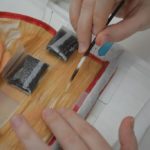
By Laura G. García Vedrenne, second year student, MPhil Textile Conservation.
As part of our taught lessons at the CTC, we study photodegradation and its effects on dyes and textile fibres. Last semester, I treated the apron of an early 20th century bisque doll dressed in regional costume, belonging to Glasgow Museums, which had suffered the severe effects of exposure to ultraviolet radiation.
Based on the differences in clothing styles, used materials, and selection of colours, the doll’s dress resembles the traditional festive attire used in Bern, Switzerland. The apron’s textile is a satin weave (4/1) in which the undyed cotton wefts would remain hidden by the fine pink/reddish silk warps. The selvedge is located on the proper left side of the doll. Hems on the right-side and lower and bottom part were machine-stitched.
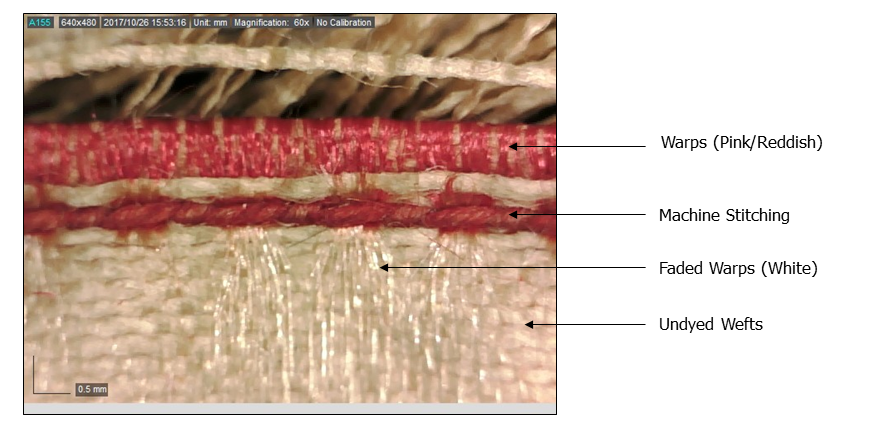
Before conservation treatment, the fabric was extremely fragile due to the loss of warp threads from photodegradation and mechanical stress. Silk warp threads were subject to tension breaks, resulting in lifted, fluffy surfaces and frayed appearance at the fibre ends. Since floats are not bound as often in satin-weave textiles, a significant part of the structure was lost when the surface abraded or when threads disintegrated. This damage covered approximately 80% of the apron. There was also evidence of severe fading and brittleness of the silk fibres, where the dye’s mechanism of degradation caused by light catalysed chemical changes in the fibre substrate as well.
Evidently, the weave was lost and the weft threads were only held in place by the stronger support of the selvedge and the hems. The folded and creased areas of fabric were better protected from light exposure, so the silk floats remained vibrant red in these areas. In addition to the visual impact of fading, light exposure also decreased tensile strength. This type of degradation is frequently seen in silk fibres, where hydrolysis, photolysis, and oxidation mechanisms have been triggered.
Therefore, the apron required additional support to stabilise the damaged weave. A combined adhesive technique with supplementary stitching was considered beneficial to enhance the apron’s long-term preservation by imparting structural stability without restraining movement, conserving the textile’s flexibility and free-hanging quality.
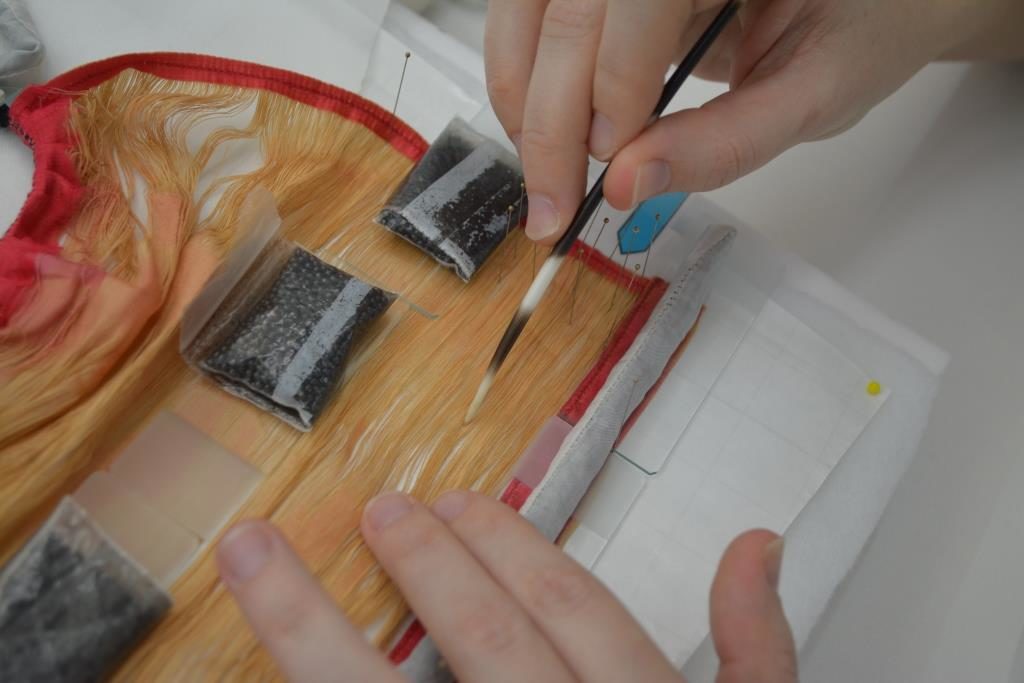
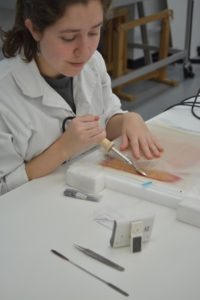
Lightfastness is determined by:
- – Chemical structure of the dye molecule
- – Interaction with the mordant
- – Type of substrate
- – Wavelength, intensity, and duration of the radiation
- – Temperature
- – Relative humidity
- – Chemical agents in the environment
Conservators know that damage caused by light is irreversible and cumulative. Therefore, once a textile loses its colour, there is little we can do to solve issues related to aesthetic problems. After discussion with Glasgow Museums’ textile conservator about the desired visual effect of the apron’s colour, two different dyeing tonalities were selected for the supports: a slightly faded pink-beige colour was chosen for the back support, and an intense red was selected for the overlay. The dyed overlay worked for two purposes: as a protective layer for the brittle silk fibres and as means for the interpretation of the doll’s regional costume.
Nowadays, conservation practitioners invest efforts in developing preventive conservation measures to prevent fading from happening. Illumination for objects on display is controlled to block ultraviolet (UV) radiation and to avoid photodegradation. This approach is fairly recent (in fact, there is still on-going research to find out more about the fading risk for light-sensitive dyes and it was only a few decades ago that preventive conservation became a priority in museums.
During the doll’s conservation treatment, a spectrophotometer was used to register measurements in different areas of the apron and to evaluate colour change related to fading. Photography was also kept minimal to avoid further exposure to light. Initial examination proposed using UV photography to support condition assessment but, after further reflection, it was decided that it was not worth exposing the faded object to such large amount of UV radiation to support the already-conclusive visual examination.
Though the illumination used in museums and conservation studios is unlikely to cause the same effects as exposure to direct sunlight or fluorescent lamps did in the past, it is still considered wise to limit the exposure of textile to any sort of UV radiation. With the aim of expanding on the assessment of specific preventive conservation conditions for the doll, a UV meter was used to test several protective materials against light damage. This simple test allowed evaluating the extent and amount of the radiation that was blocked from the UV filtered bulbs in the workroom. It was also useful to compare it with the radiation of a common UV lamp. The following table summarizes the results:
| Testing of protective materials against light damage | |||
| UV present
(uW/lumen) |
UV total amount (mW/M²) | Amount of visible light present (lux) | |
| Without protection | 0 | 0.7 | 999 |
| Polythene plastic | 0 | 0.5 | 831 |
| Tyvek ® sheet | 0 | 0 | 168 |
| Tissue paper | 0 | 0.4 | 843 |
| Calico fabric | 0 | 0 | 348 |
| Melinex ® (125 micron) | 0 | 0.6 | 874 |
| Grey board | 0 | 0 | 113 |
| Black paper | 0 | 0 | 55.9 |
| Object directly exposed to UV lamp | 34811 | 39344 | 2.7 |
In this sense, it was concluded that the second year workroom is free from UV radiation since it counts with counts with UV filters for bulbs and windows. It was also noted that diverse materials block visible light to different extents. Opaque and dark materials tend to offer better protection against visible light, although a simple Tyvek ® sheet is a good and easily accessible option. This testing informed the type of materials selected for the proposed temporary (during treatment) and permanent storage systems.
Working on the conservation treatment of this doll was a practical challenge that encouraged me to engage with sources related to adhesives, fading, and contextual information about the object. I hope that, in the future, conservators that work on this dolls collection or on similar objects will take interest on researching the topic further. For example, it would be interesting to see if other fabrics from the dolls collection show similar degradation patterns of the silk components in relation to the lightfastness of sensitive dyes.
Further Reading:
Boersma, Foekje, Agnes W. Brokerhof, Saskia van den Berg, and Judith Tegelaers. “Light” in Unravelling Textiles, a Handbook for the Preservation of Textile Collections. London: Archetype, 2007, 47-60.
Timár-Balázsy, Ágnes and Dinah Eastop, Chemical Principles of Textile Conservation. Oxford: Butterworth-Heinemann, 1998, 90-93.
Condra, Jill. Encyclopedia of National Dress: Traditional Clothing Around the World. Santa Barbara: ABC Clio, 2013, 703.
Mills, John, and Raymond White. “Fundamental Aspects of Deterioration” in The Organic Chemistry of Museum Objects. Oxford: Butterworth-Heinemann, 1999, 138.


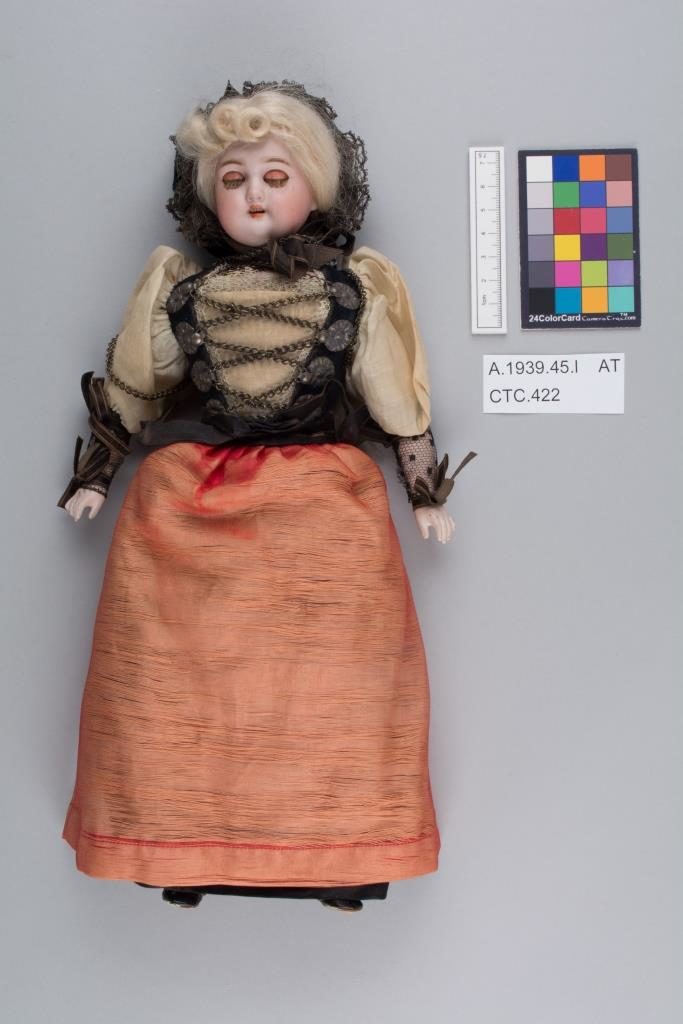
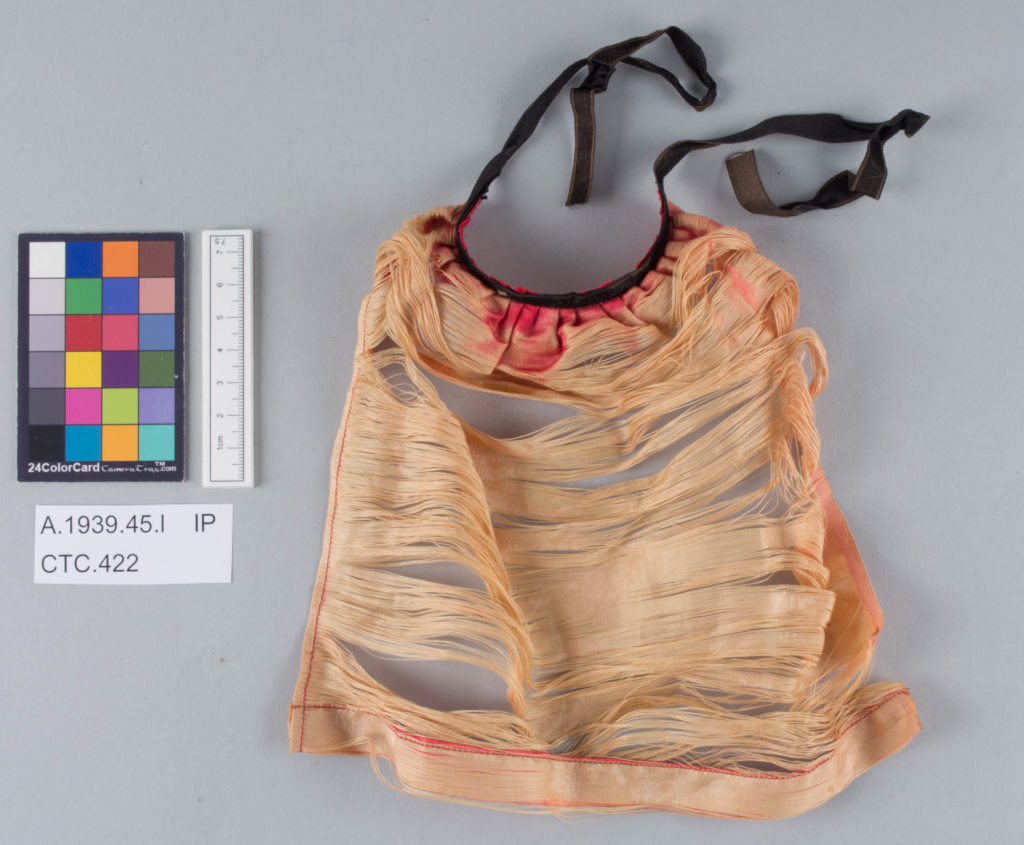
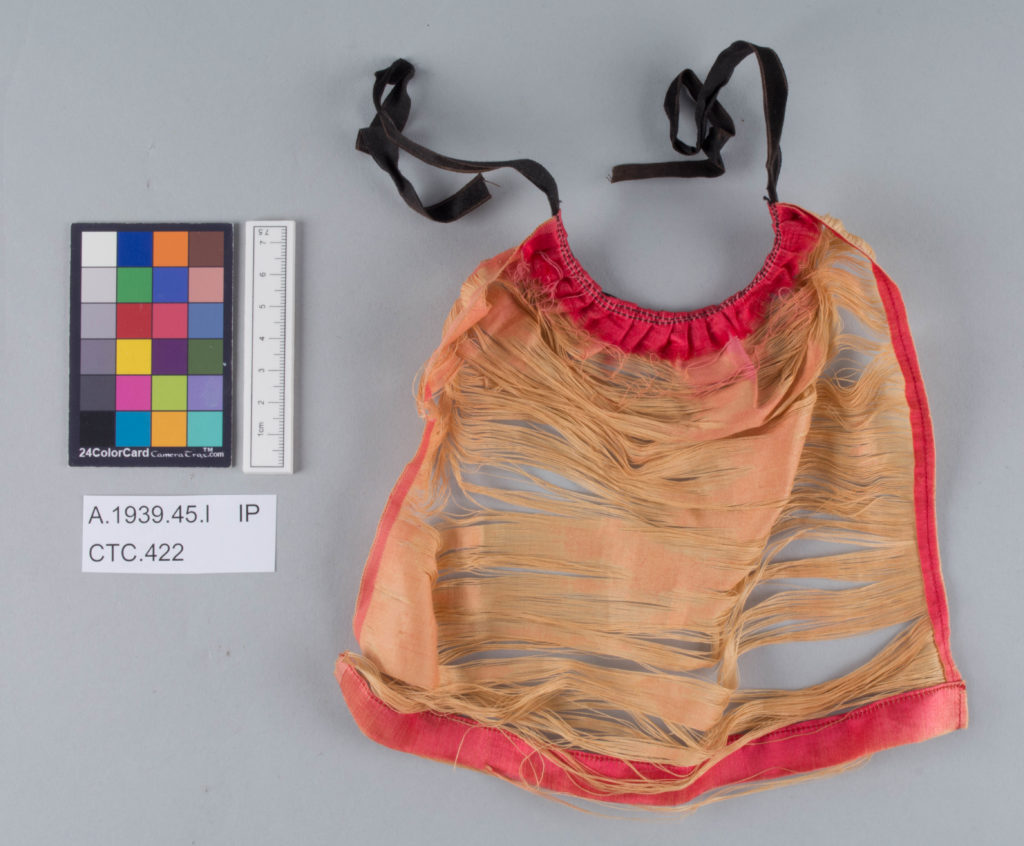
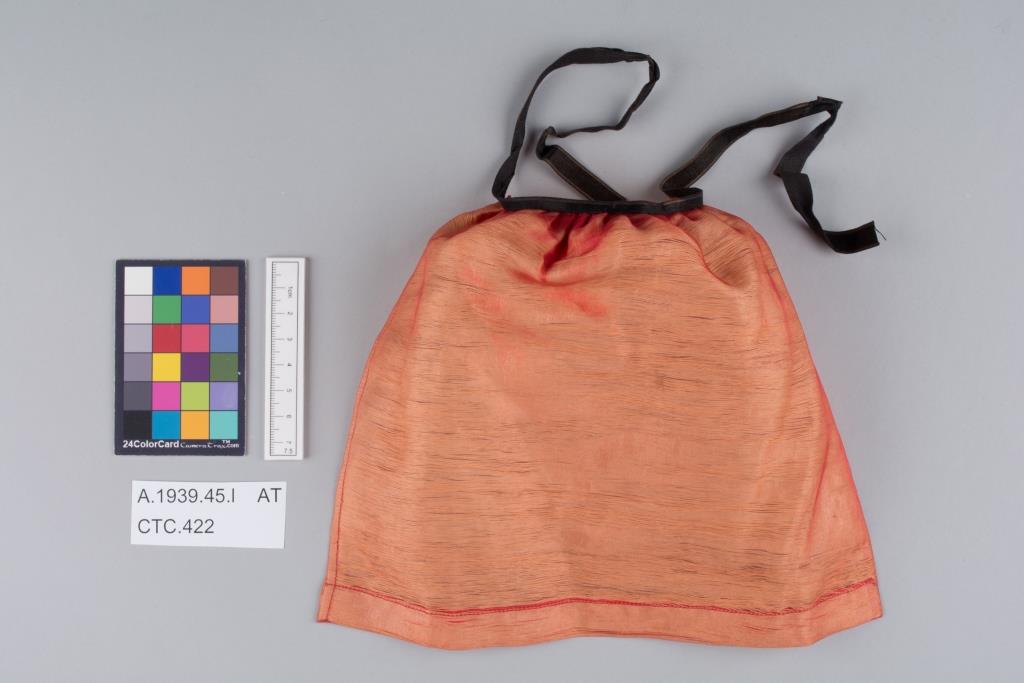
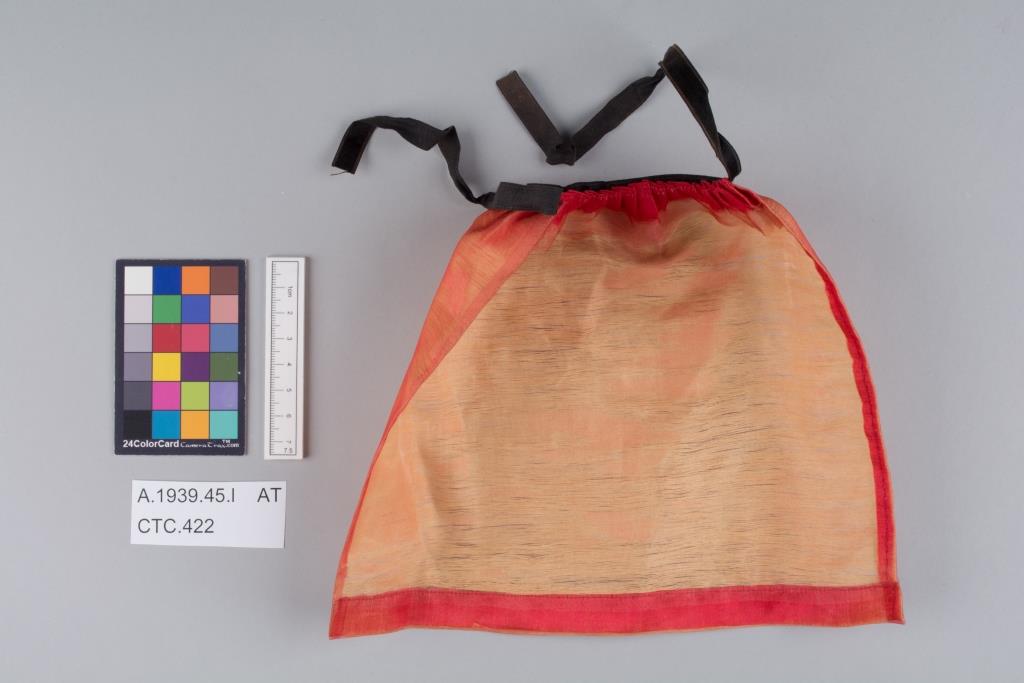
Dear Sarah,
This must be the first doll on the Posts, it is fascinating the way so many have lasted. I am forwarding it to a young cousin who takes care of my mother’s doll! Love to all DAWN